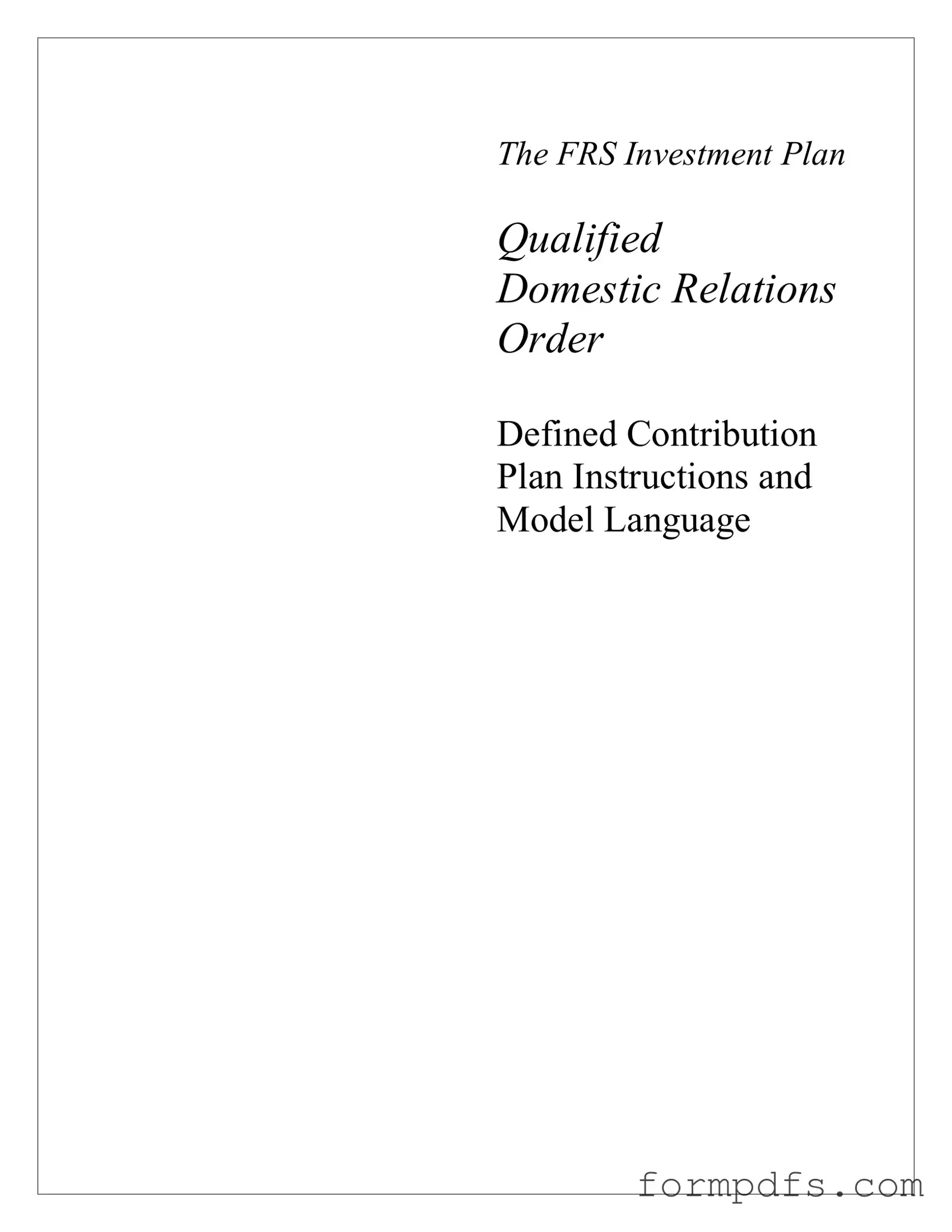What is a QDRO and why is it important?
A Qualified Domestic Relations Order (QDRO) is a legal order that divides retirement plan benefits between divorcing spouses. It is essential because it ensures that the non-member spouse receives their rightful share of the member's retirement benefits. Without a QDRO, the retirement plan may not recognize the division of assets, which can lead to complications in the future. This order must be approved by the court and adhere to specific guidelines to be considered valid.
What information do I need to include in the QDRO form?
When filling out the QDRO form, you will need to provide detailed information about both the member and the alternate payee. This includes full names, current mailing addresses, Social Security numbers, and dates of birth. Additionally, you must specify the defined contribution plan involved, the dates of marriage and divorce, and how the benefits will be divided. It's crucial to ensure that all required fields are completed accurately to avoid delays in the approval process.
How do I determine the amount to be assigned to the alternate payee?
The QDRO form offers several options for determining the amount assigned to the alternate payee. You can choose a straight percentage of the member's vested account balance, a specific dollar amount, or a marital fraction based on the member's benefits. It is important to select only one method, as combining them is not permitted. The chosen method will dictate how the benefits are calculated and when they will be paid out.
What happens if the QDRO is not approved?
If the QDRO is initially deemed not qualified by the Plan Administrator, the court retains jurisdiction to address any necessary modifications. Both parties may need to provide additional information or make adjustments to the order to meet the requirements. It's vital to ensure that the QDRO complies with all regulations to facilitate a smooth division of benefits and avoid potential disputes down the line.
